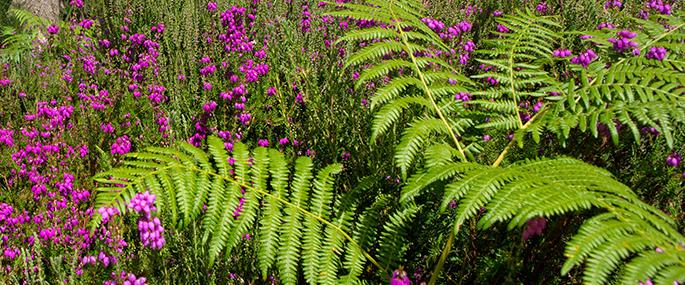Bracken is the UK's most common fern and grows in dense stands on heathland, moorland, hillsides and in woodland. It is a large fern that favours dry, acid soils and spreads by underground rhizomes. Unlike many ferns, Bracken dies back in winter, leaving brown withered fronds that pepper the landscape. In the spring, the tightly curled fronds appear, grow and unfurl.
Bracken is a highly invasive plant and can be damaging to sensitive habitats if it is allowed to spread as it can shade out other, rarer plants. The Wildlife Trusts ensure that the habitats they manage are well-balanced through a number of conservation measures including removing overpowering species like Bracken, scrub-cutting and controlled grazing. You can help too: volunteer for your local Wildlife Trust and you could be involved in everything from stockwatching to raising awareness about wildlife.
